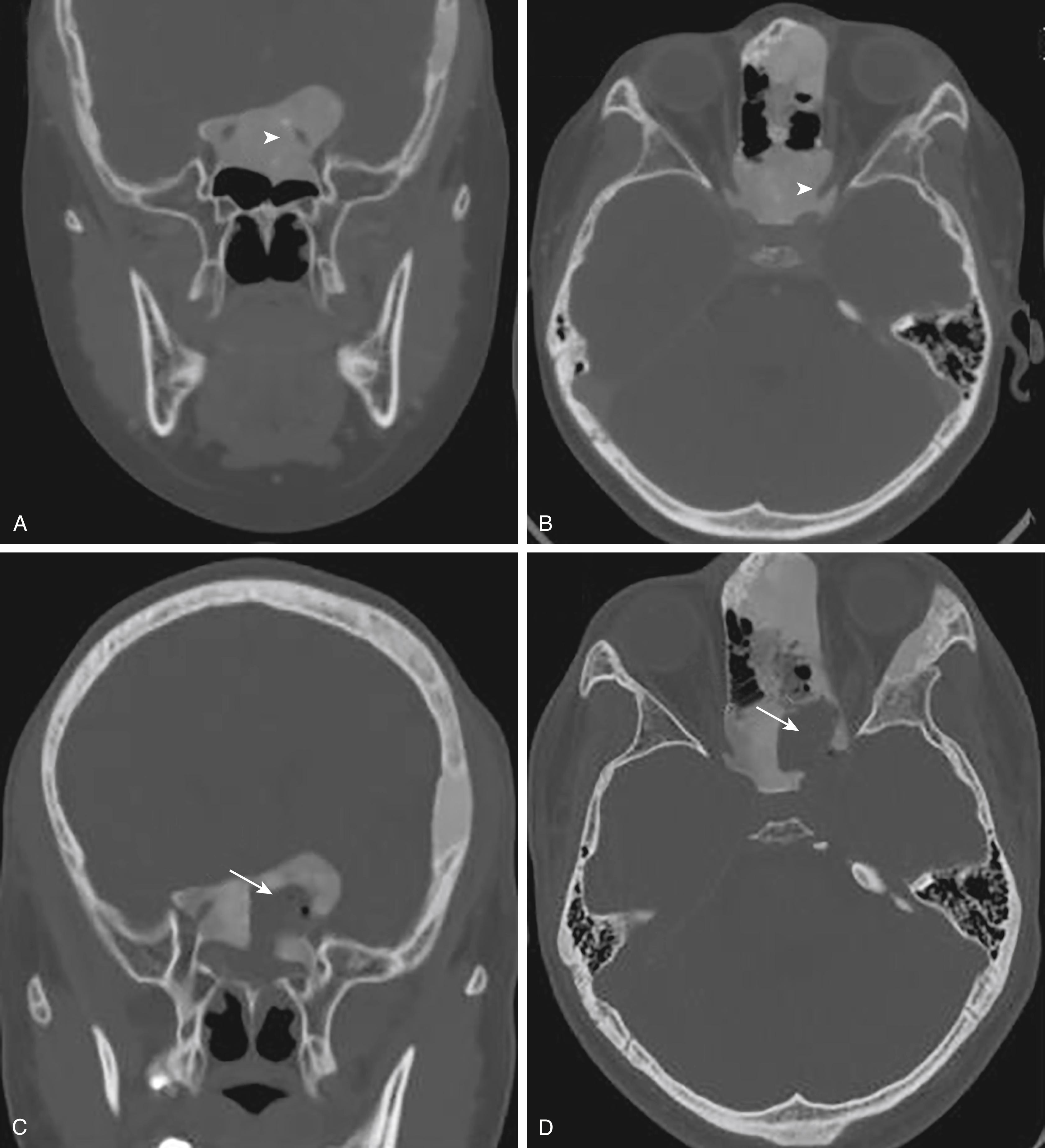Physical Address
304 North Cardinal St.
Dorchester Center, MA 02124
Visual compromise due to injury or compression of the optic nerve can be debilitating and lead to significant impairment in a patient’s quality of life.
Transcranial and transfacial access for optic nerve decompression have been the classical approaches for surgical intervention, although endoscopic/transnasal approaches are playing a more common role in the management of pathology affecting the optic canal.
Improvements in endoscopic instrumentation, understanding of the anatomy, and increased experience have enabled these advances.
Causes of optic nerve injury can be classified as traumatic or nontraumatic optic neuropathy (ON).
Most early endoscopic experience was concerned with treatment of traumatic causes of ON; however, conflicting reports have failed to demonstrate a definite benefit of surgical intervention, which has led to this indication falling out of favor.
Endoscopic decompression is now becoming a more common role in nontraumatic ON secondary to compressive lesions or fibro-osseous disease.
The optic canal is typically identifiable as a prominence in the superior-lateral wall of the sphenoid sinus.
At least 180 degrees of bone must be removed circumferentially from the canalicular segment of the optic nerve after carefully thinning the bone with a high-speed drill.
History of present illness
Visual complaints: Decreased acuity or color vision, diplopia, periorbital pain, unilateral versus bilateral symptoms
Time course is important to document: Although chronic compression is frequently believed to have a decreased response to decompression, studies fail to correlate the length of time from the onset of the disease and the likelihood of visual improvement.
Additional neurologic symptoms: These symptoms may provide insight into the extent of the disease.
Any recent interventions
Past medical history
Prior interventions
Surgical decompressions: Verify type of approach (transnasal endoscopic, transcranial) and outcomes.
Nonsurgical treatment of underlying pathology: This might include radiation for a tumor or high-dose steroids.
Other medical problems, surgeries: Determine if underlying health status may preclude surgical intervention.
Ophthalmologic examination (formal ophthalmology consultation is highly recommended)
Visual acuity (VA)
Afferent pupillary defect: This can be seen prior to any decline in VA.
Color vision testing: Decline in red color vision is seen first and may be present prior to a decline in VA.
Extra-ocular motility
Visual fields testing
Optical coherence tomography: Noninvasive testing can determine the nerve fiber thickness of the retina (long-standing lesions with evidence of nerve atrophy may be less likely to recover function after decompression).
Cranial nerves: Concurrent cranial neuropathies can help define the extent of lesions as well as other nerves that may require decompression.
Nasal endoscopy: Identify any barriers to an endoscopic approach that may need to be addressed preoperatively or intraoperatively (i.e., septal deviation requiring septoplasty, acute sinusitis requiring antibiotic therapy).
Computed tomography (CT) with contrast of the sinus
Navigational protocol: 1-mm slice width
Contrast is important for defining the location of the internal carotid artery (ICA) in relation to the optic nerve.
± Magnetic resonance imaging (MRI)
Depends on specific indications of optic nerve decompression (i.e., critical for evaluating extension of the tumor into the optic canal but less important for defining fibro-osseous disease)
Compression due to an extrinsic mass
Tuberculum and planum meningiomas with extension into the optic canal
Mucocele
Fibro-osseous lesion ( Fig. 150.1 )

Primary sinonasal malignancy (in the absence of nerve invasion)
Fungal ball
Primary tumors of the skull base: chordoma, chondrosarcoma
Primary tumor of optic nerve: glioma, meningioma, hemangioma
±− Trauma: Controversial
International Optic Nerve Trauma Study : There is no clear benefit of high-dose steroid therapy versus canal decompression versus observation alone.
Select patients may benefit and be determined on a case-by-case basis.
Medical comorbidities precluding safe administration of general anesthesia: May require further optimization of the patient’s medical condition if possible versus alternative treatment methods (i.e., radiation, steroids)
Technical inexperience: Safe surgery requires significant experience in sinonasal surgery and should not be undertaken by a novice endoscopic sinus surgeon. Team surgery incorporating the skill set of an experienced otolaryngologist and neurosurgeon can be beneficial.
Trauma: See Indications above. Controversial indication and more recently has fallen out of favor
Optic nerve encasement, fibrous dysplasia: Surgical decompression of nerve encasement without visual compromise
Surgery in asymptomatic patients is associated with visual deterioration.
Documented formal ophthalmologic examination
Correct coagulopathy if present
Evaluate preoperative imaging for any variations in sphenoid pneumatization (i.e., an Onodi cell).
Become a Clinical Tree membership for Full access and enjoy Unlimited articles
If you are a member. Log in here